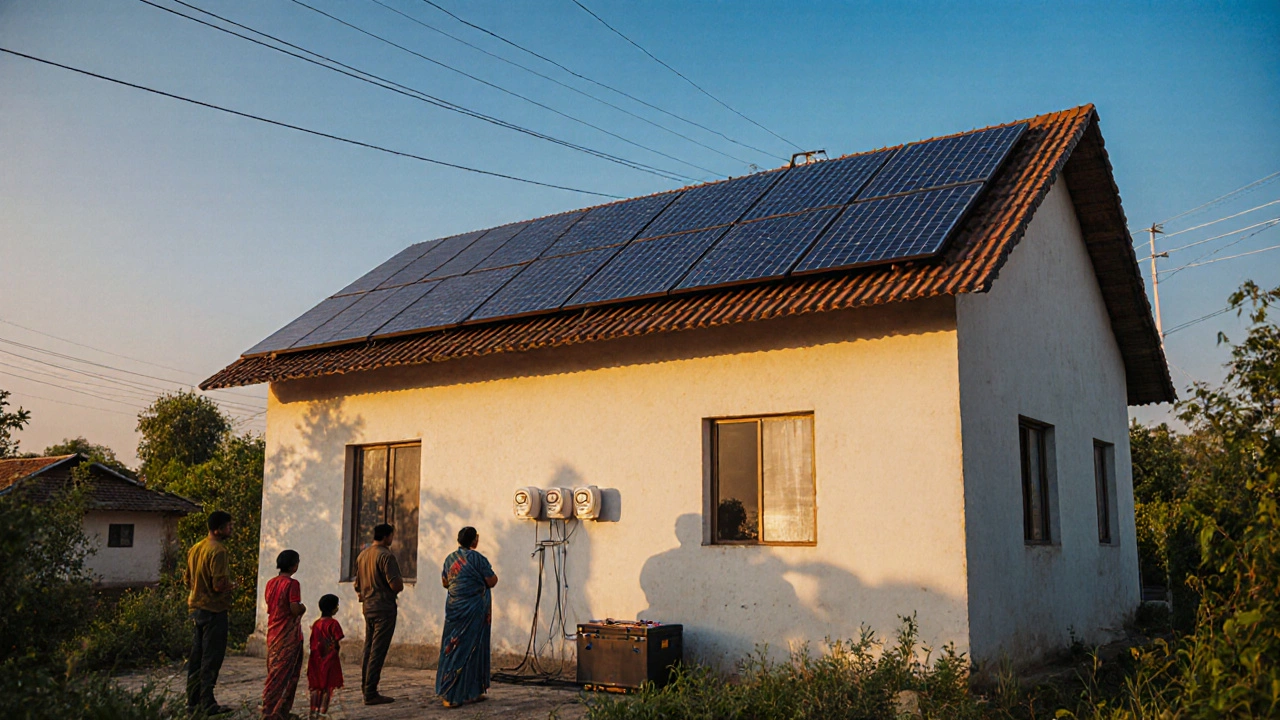Solar Power Price: What It Costs and How It’s Changing in India
When you hear solar power price, you might think of expensive rooftop panels or government subsidies. But the real story is simpler: solar is now the cheapest way to generate electricity in most parts of India. It’s not just for big cities anymore—villages in Rajasthan, farms in Punjab, and small shops in Tamil Nadu are all using it because it saves money, not because it’s trendy. This shift didn’t happen overnight. It came from better panels, local manufacturing, and policies that rewarded real savings over hype.
Solar energy, a renewable source that turns sunlight into electricity using photovoltaic panels. Also known as photovoltaic power, it’s now the fastest growing energy source in the country, adding more capacity each year than coal, gas, or nuclear combined. And the cost? A typical home system in India now runs between ₹60,000 and ₹1,20,000 after subsidies—far less than it did five years ago. The price per watt has dropped by over 70% since 2018. That’s not a guess—it’s backed by data from the Central Electricity Regulatory Commission and real bills from households that switched.
Solar panels, the physical modules that capture sunlight and convert it into usable electricity. Also known as PV modules, they’re not just glass and silicon anymore. Modern ones last 25+ years, work even in cloudy weather, and come with warranties that cover performance. What you pay isn’t just for the panels—it’s for the inverter, mounting, wiring, and installation. But here’s the catch: many people overpay because they don’t know what to ask for. A good installer will break down the cost per unit of power (₹/kWh), not just the total price. And it’s not just about homes. Schools in Bihar, clinics in Odisha, and even streetlights in Gujarat are running on solar now because the long-term savings beat diesel generators every time.
Renewable energy prices, the cost of generating electricity from natural sources like sun, wind, and water. Also known as clean energy costs, they’ve dropped so fast that solar is now cheaper than buying power from the grid in 90% of Indian states. That’s why utilities are rushing to build solar farms and why farmers are leasing their land for panels instead of growing crops. The real question isn’t whether solar is affordable—it’s whether you’re getting the best deal. Some companies sell you a system and disappear. Others offer maintenance, monitoring, and even financing with zero down payment.
What you’ll find below aren’t just articles about solar. They’re real stories from people who cut their electricity bills in half, startups that built solar microgrids for villages, and engineers who figured out how to make panels last longer in dusty conditions. You’ll see how solar price isn’t just a number—it’s a decision that changes how families live, how businesses run, and how India powers its future.




